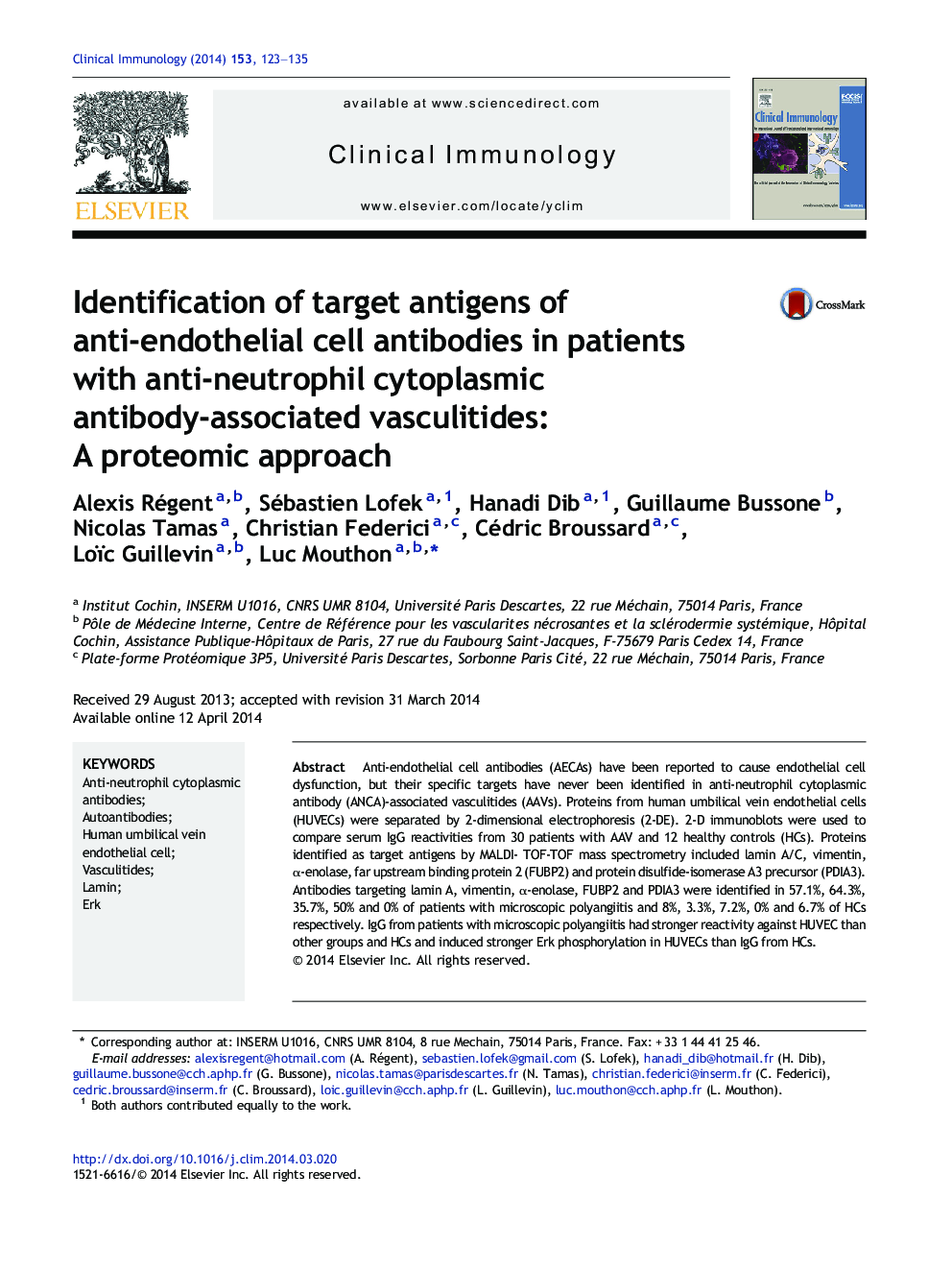| Article ID | Journal | Published Year | Pages | File Type |
|---|---|---|---|---|
| 6087467 | Clinical Immunology | 2014 | 13 Pages |
â¢Target antigens of anti-endothelial cell antibodies in AAV patients were identified.â¢Identified proteins include lamin, vimentin, α-enolase and FUBP2.â¢Reactivity against these antigens was confirmed by ELISA.â¢Patients with MPA had stronger reactivity against HUVEC and antigens than others.â¢Purified IgG from patients with MPA induced stronger P-Erk than those from controls.
Anti-endothelial cell antibodies (AECAs) have been reported to cause endothelial cell dysfunction, but their specific targets have never been identified in anti-neutrophil cytoplasmic antibody (ANCA)-associated vasculitides (AAVs). Proteins from human umbilical vein endothelial cells (HUVECs) were separated by 2-dimensional electrophoresis (2-DE). 2-D immunoblots were used to compare serum IgG reactivities from 30 patients with AAV and 12 healthy controls (HCs). Proteins identified as target antigens by MALDI- TOF-TOF mass spectrometry included lamin A/C, vimentin, α-enolase, far upstream binding protein 2 (FUBP2) and protein disulfide-isomerase A3 precursor (PDIA3). Antibodies targeting lamin A, vimentin, α-enolase, FUBP2 and PDIA3 were identified in 57.1%, 64.3%, 35.7%, 50% and 0% of patients with microscopic polyangiitis and 8%, 3.3%, 7.2%, 0% and 6.7% of HCs respectively. IgG from patients with microscopic polyangiitis had stronger reactivity against HUVEC than other groups and HCs and induced stronger Erk phosphorylation in HUVECs than IgG from HCs.
